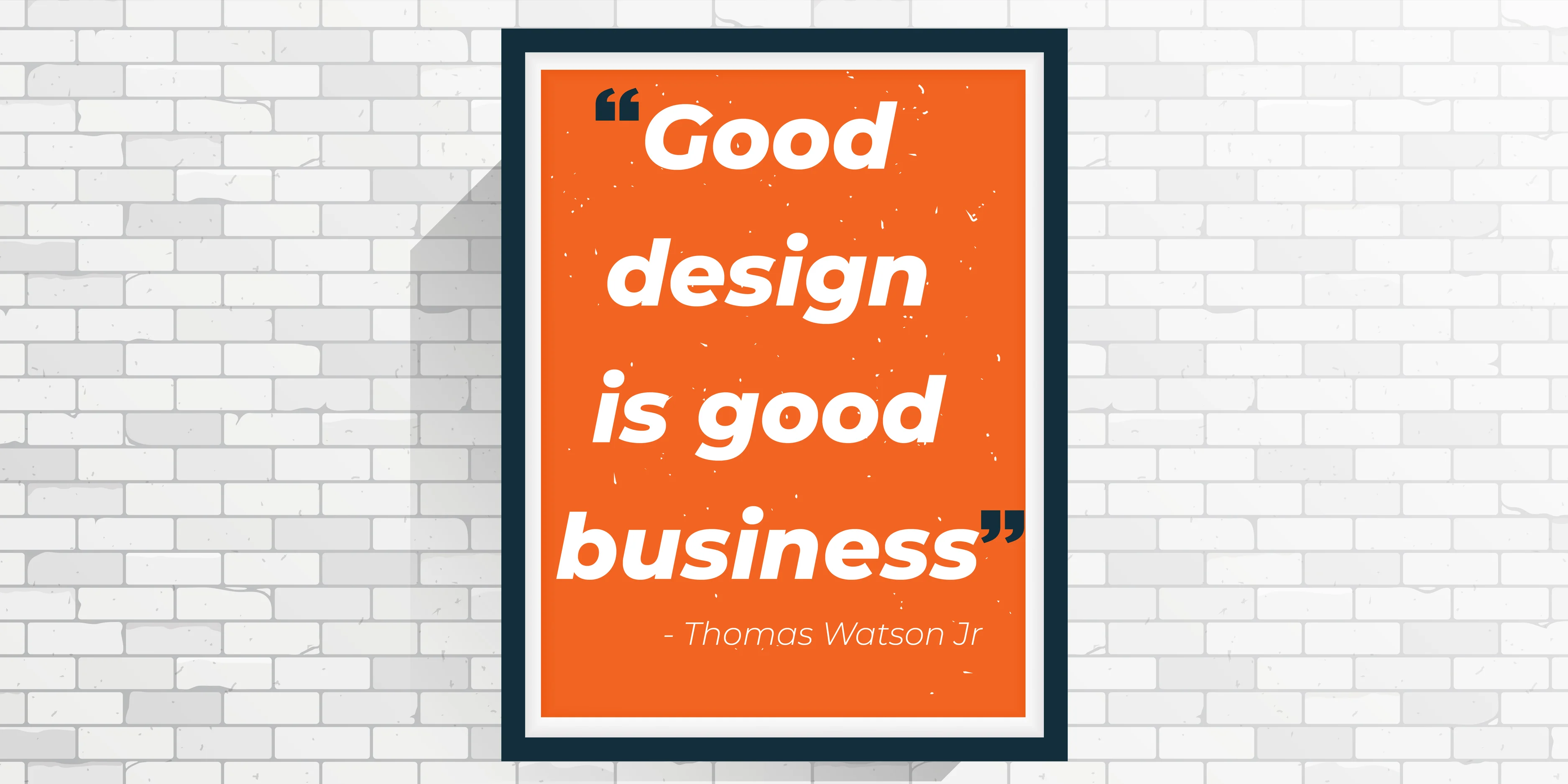
Resources
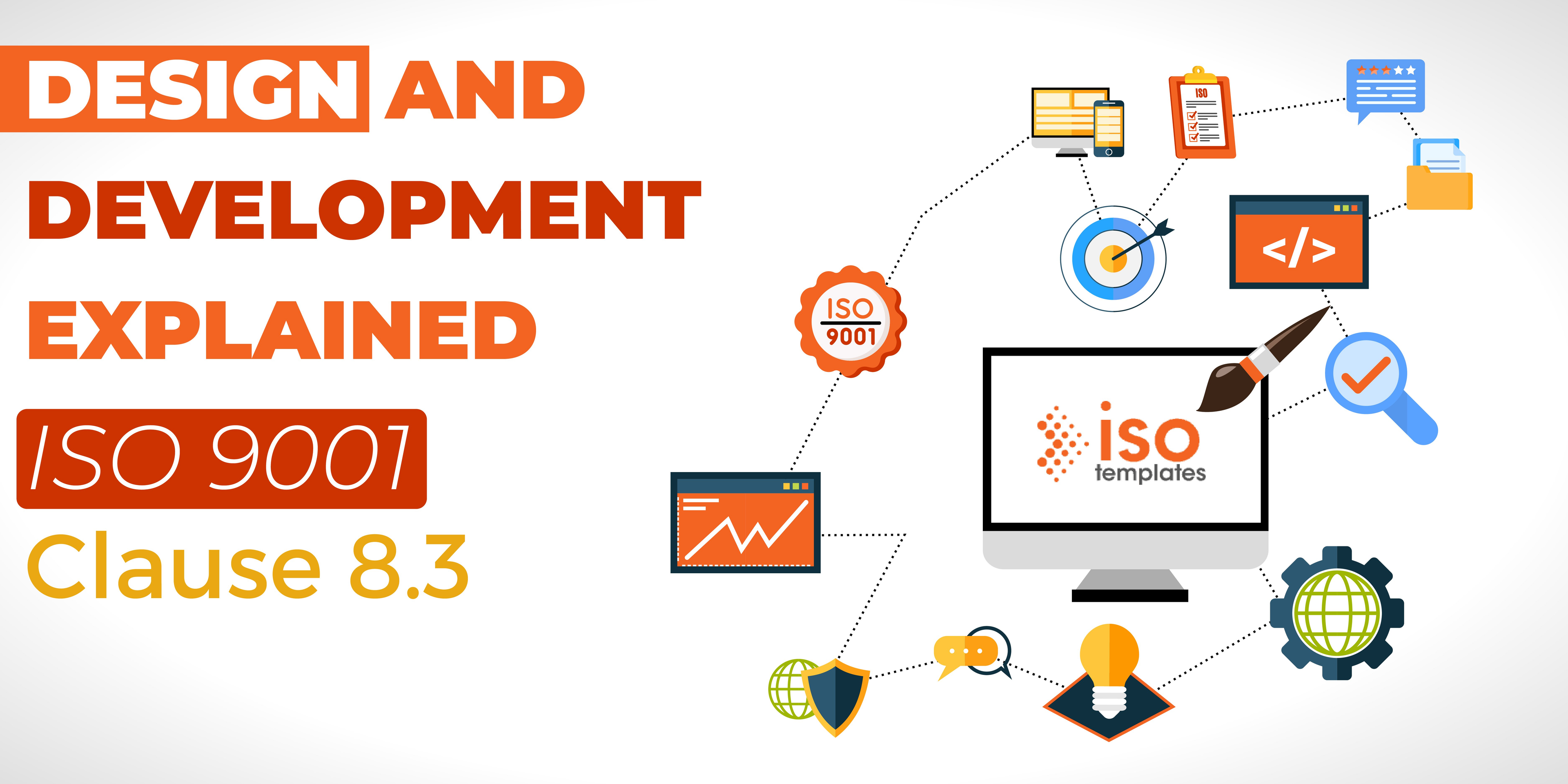
August 3, 2020
ISO 9001 - Clause 8.3: Design and Development explained
Design and Development of a product or a service is an important process and quality of your final product or service depends a great deal on the accuracy of the output from this phase. ISO 9001 has defined detailed requirements for this clause which starts with design and development planning, capturing the design and development inputs, review, verification and validation, documenting the outputs of design and development and managing any changes to design and development. All these stages shall be well planned, executed, adequately documented and changes controlled to meet the requirement of this clause.
Why is it important?
Imagine what will happen to a project where the design output does not meet the acceptance criteria set by the client. The product/service based on a faulty design will obviously not work as per the client’s expectation. This will lead to client dissatisfaction and finally earn you a bad reputation. To ensure that you do not end up delivering something which is not required by the client, an organisation needs to plan the design and development phase in detail. A well-planned design and development process will ensure that the project is completed within the timeframe provided and meets the budgetary requirements. This will require that the design inputs which may be in the form of written documents provided by the customer or explored along with the customer during various meetings, or regulatory requirements, etc are captured and documented well. Another important aspect is to review the progress of the design and development phase and verify that the customer requirements are being met at different stages. Validation also becomes important to ensure that the end product or service meets its intended purpose and works in the desired manner in the end-user environment. All outputs from the design and development phase shall be retained and controlled.
Any changes to design and development if not handled in a planned manner can end up in a defective product or faulty service being delivered. Even the minutest change to design shall go through a procedure where the change is evaluated and impact on various other processes, budget, etc analysed to ensure all these impacts are handled well and changes required in other areas or processes is taken care of.

Design and Development Planning
Planning Design and Development activities are important to execute all the design and development activities efficiently. The complexity of the design and development stages shall determine the amount of planning that you need to do for this process. Some companies with a high dependency on design outputs will need to have detailed planning and apply controls at each stage to ensure that all customer requirements are met. But, keep in mind, planning shall be just enough to meet the design and development objectives. Consider the following to determine adequate controls and stages of design:
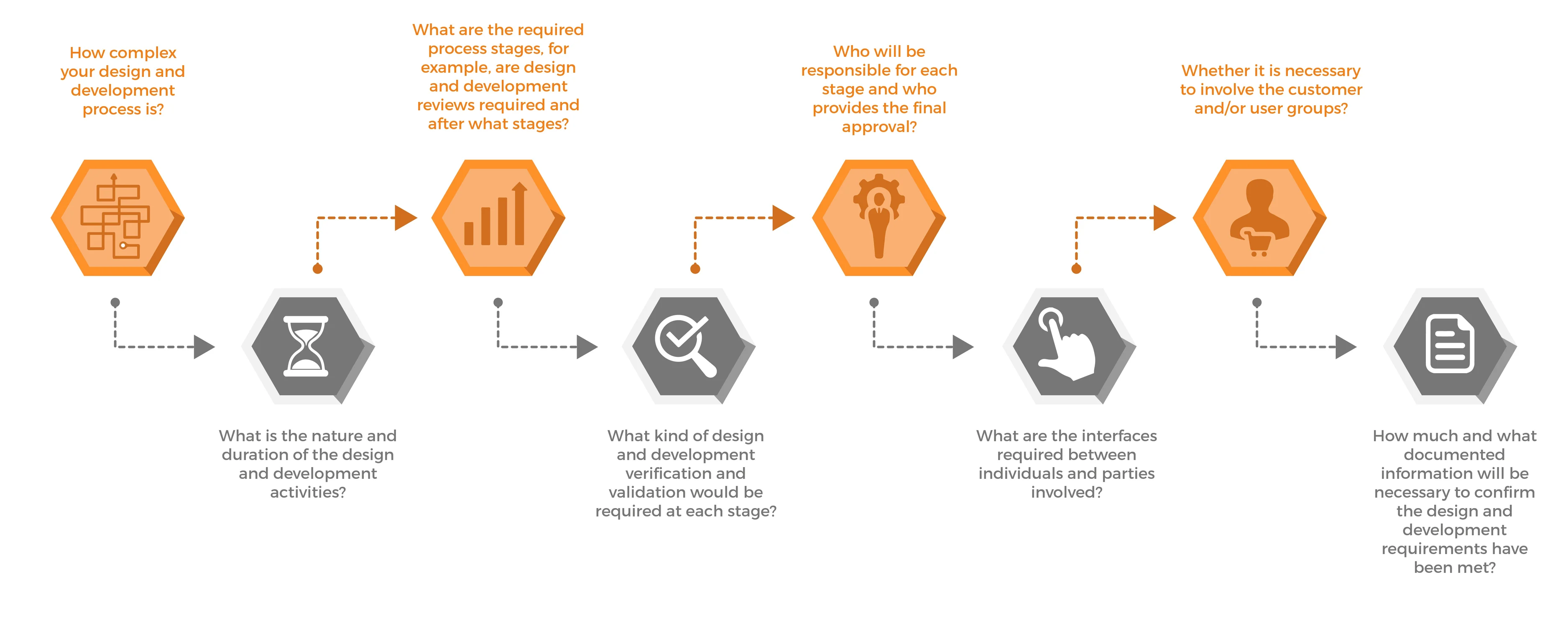
The planning may be done in a formal plan or can be done through meetings, periodic reports or other methods. The intent is to ensure all planning elements are met and all information is gathered.
While planning for design and development activities, consider planning the:
- Design and development stages
- Design and development inputs
- Design and development controls
- Design and development outputs
- Design and development changes
Design and Development Inputs
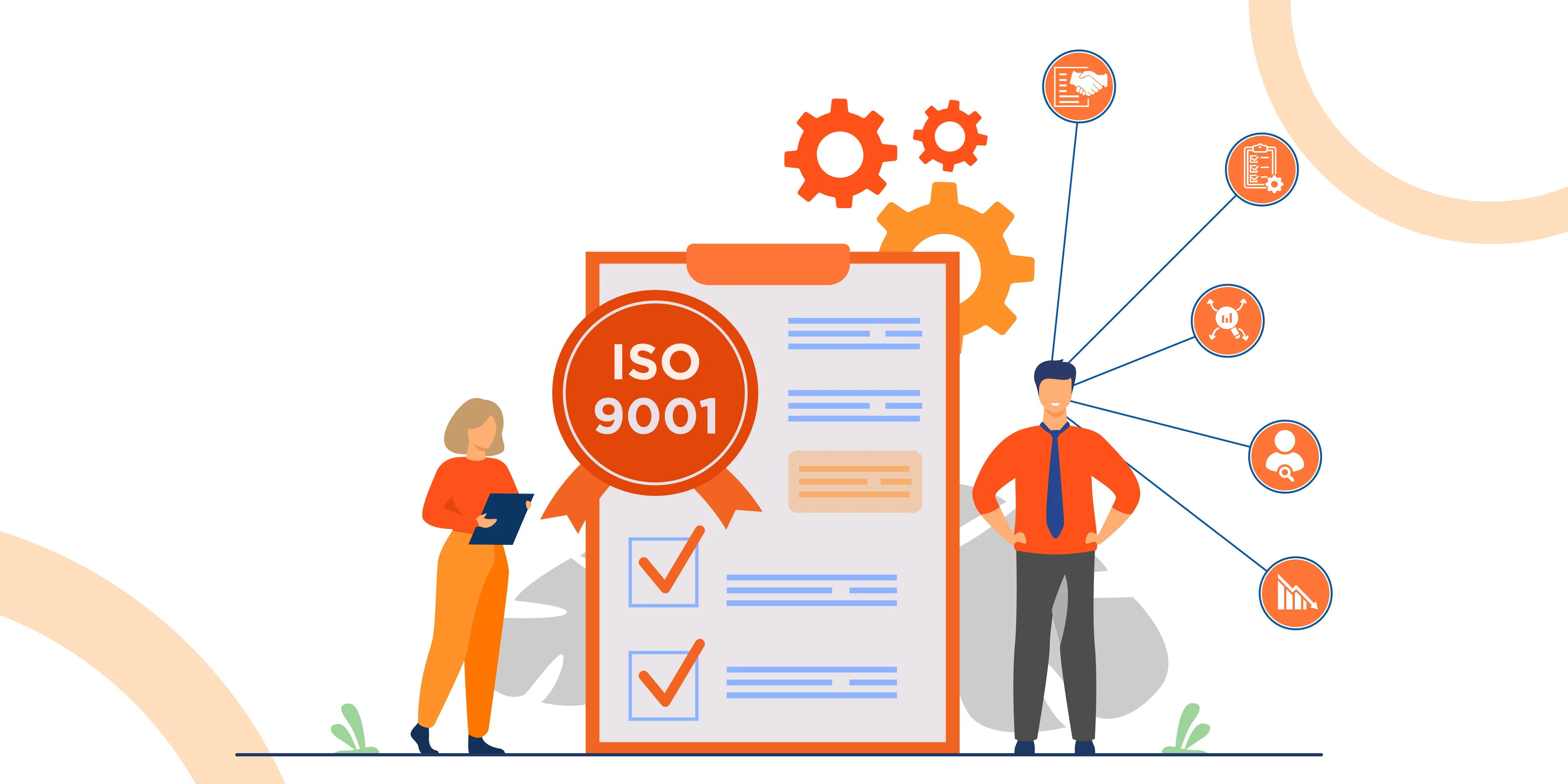
This clause of ISO 9001 requires that the design and development inputs are identified and if there is any discrepancy in understanding these inputs, it should be resolved before proceeding further with the design process. Typical design inputs include customer contracts, statement of work, drawings and specifications, reusable information from design and development activities of previous projects, industry standards, competitor analysis, any applicable statutory and regulatory requirements, internal or external resource needs, etc. Design inputs may also be obtained considering the potential consequence of failure due to the nature of the product or service and the customer’s and other stakeholders projected level of control of the design and development process.
Let’s take an example of an architecture company to understand this better. An architect will typically need inputs in form of Architecture Return Brief, Relevant standards, guides and codes (e.g. ISO, AS/NZS, Greenstar), Local and statutory requirements (e.g. National Construction Code and Development Approval), etc. These shall be gathered, documented and understood well before proceeding with the design.
Design inputs requirements may include requirements related to functionality, performance, safety, regulations, maintainability, traceability, etc. from the customer or the regulatory body.
Design and Development Controls
Once all design inputs are finalised, the next step is to ensure adequate controls are applied so that the outputs of the design and development process are clearly defined and are as per customer’s requirement. Controls can be applied in the form of reviews, verification and validation of design and development activities.
While review, verification and validation are done to meet distinct purposes, they can be conducted separately or in any combination as it is suitable for the product and services of the organisation.

Design and Development Reviews
The purpose of reviews is to assess the results of the design and development process, check the progress of design activities and costs involved and take actions if any problems are detected. Reviews may be carried out at required milestones/ intervals as per size, complexity, risks involved and the customer requirements.
Design and Development Verification
The purpose of verification is to ensure that the outputs of design and development processes are meeting the input requirements or not. This can include simulations and testing, comparing this to previous design for a similar product, reviewing the design documents, etc. Typically, through objective evidence, an organisation needs to demonstrate that specified requirements have been fulfilled.
For an architect, this can be summarized as “Did you design the building right?”An architect will review their drawings and specification to verify that:
- Design complies with and is traceable to inputs
- Design complies with client requirements
- Design complies with standards, guides and codes
- Design complies with local and statutory requirements
- Constructability and maintainability review has been completed
- Design is economical and value-for-money
Design and Development Validation
The purpose of validation is to check the product’s or service’s suitability for its intended use. This will involve tests and trials conducted in the end-user environment, process capability studies, reviewing the process design documents, etc.
For an architect, this can be summarised as “Did you design the right building?”
An architect would validate the design through reviews and assessments with the relevant end-users to ensure that:
- The design is suitable for the intended use. For example residential, aged care, healthcare, commercial buildings will have a different set of requirements for the end-user; the design shall be validated to ensure these are met.
- Specific user requirements have been met. For example, in a healthcare setting, this could be allowances for nurse stations, additional utilities and access requirements, etc. The design shall accommodate these end-user requirements.
Also, during Construction, an architect will validate the design and development output through involvement in various activities like:
- Responding to requests for information from the builder
- Managing changes to the drawings and specifications
- Conducting site inspections to witness the construction process and verify that what is being built matches what has been designed
- Review of shop drawings prepared by construction subcontractors
Any issues found during the review, verification and validation processes shall be resolved before proceeding further with production.
Design and Development Outputs
Design and development outputs can be in the form of drawings, a prototype of the finished product or a specification. These outputs shall meet the input requirement for design and development and should be appropriate for use in processes that follow. Design output may also include a reference to any monitoring and measuring related requirement and acceptance criteria, if applicable. The design and development outputs should ensure that the final products or services that are produced based on the design are fit for their intended use.
A typical example of design and development output for an architecture company are drawings, specifications, material schedules, sample boards, etc.
Any documents produced out of design and development process shall be retained and controlled.
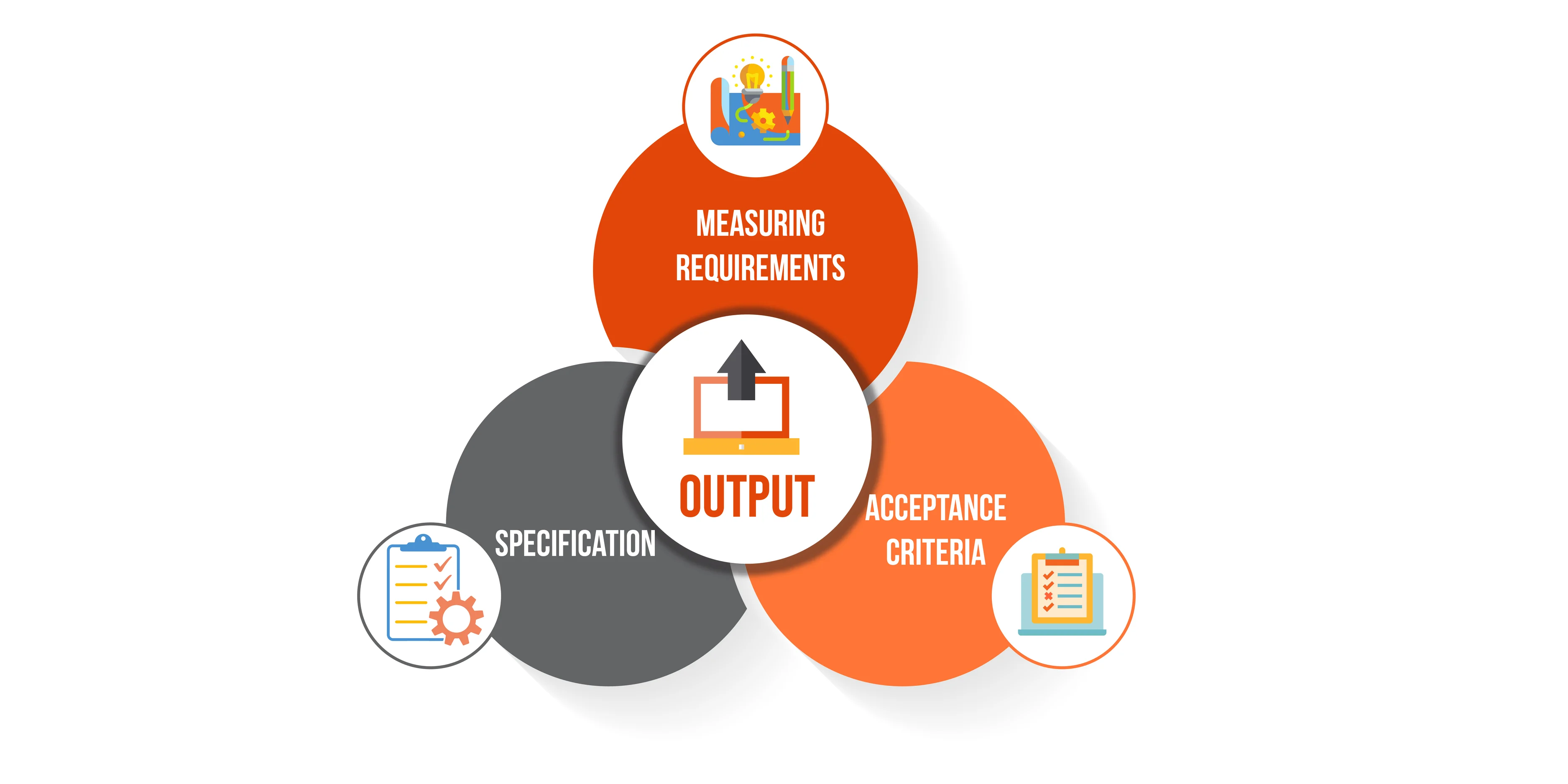
Design and Development Changes
This clause requires that if changes are required to be made to either design input or design output, then the organisation shall follow a procedure so that these changes are controlled. Take the following steps to ensure changes are done in a controlled manner:
- Get all requirements for design changes documented
- Evaluate the impact of the change on the various processes, resources used, characteristics of product/services, budget, schedule, etc. For example, an architect may consider the following items, if there is a change in design:
- What is the impact on construction activities?
- Is there any impact on regulatory requirements and would the design and development activity still comply with the statutory/regulator requirements or standard codes after the change is implemented?
- What are the additional resources required?
- How the budget and schedule will be impacted and is this viable to go ahead with the change?
- Based on the evaluation of impacted areas, the change shall be authorized
- Once the change is authorised, sufficient actions shall be taken to prevent any impacts
Any documented information on design changes needs to be retained by the organisation.
Design and Development is an important process which should be thoroughly planned and adequate review, verification and validation performed so that the product/services being delivered meet the requirements and their intended use. Importance of Design can be understood from the following quote by Thomas Watson Jr., second president of IBM:
